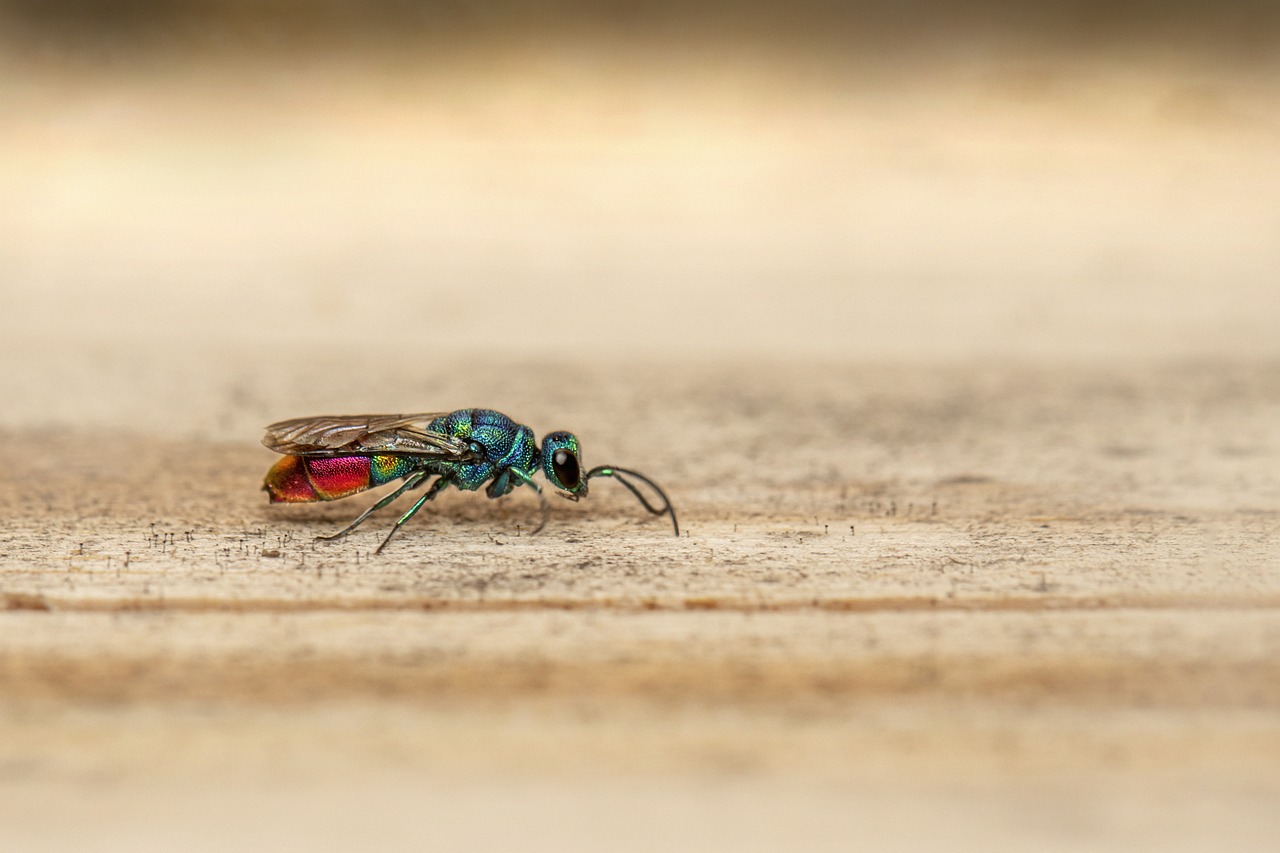The Cuckoo Wasp (Chrysis fulgida) is a striking and fascinating species of wasp known for its brilliant coloration and intriguing parasitic behavior. It belongs to the family Chrysididae, commonly referred to as cuckoo wasps.
Physical Description
- Size: Chrysis fulgida is a relatively small wasp, typically measuring around 8 to 12 mm (0.3 to 0.5 inches) in length.
- Coloration: One of the most notable features of this species is its vibrant and metallic coloration. The body is usually iridescent green or blue, with a shiny, almost reflective surface that can change hues depending on the angle of light. This coloration makes the wasp stand out and is a key identifying feature.
- Body Structure: The wasp has a distinctive, elongated body with a narrow waist (petiole) and a somewhat rounded abdomen. The wings are clear with a delicate, almost transparent appearance.
Distribution and Habitat
- Range: Chrysis fulgida is found across Europe and parts of Asia. Its distribution covers a range of temperate and semi-arid environments.
- Habitat Preferences: It inhabits a variety of environments, including meadows, gardens, and areas with sandy or clay soils. These habitats are often rich in other insect species that can serve as hosts for the cuckoo wasp’s reproductive strategy.
Behavior and Diet
- Diet: As adults, cuckoo wasps primarily feed on nectar from flowers. They may visit a variety of flowering plants, contributing to pollination in their habitat.
- Parasitic Behavior: Chrysis fulgida is a brood parasite, which means it does not build its own nest but instead lays its eggs in the nests of other solitary wasps or bees. The larvae of the cuckoo wasp will feed on the host’s eggs, larvae, or stored food. This parasitic strategy ensures that the cuckoo wasp’s offspring have a ready supply of food when they hatch.
Reproduction and Lifecycle
- Mating: Mating typically occurs during the warmer months. Males may be observed actively searching for females, and mating pairs can sometimes be seen in flight.
- Egg Laying: The female cuckoo wasp seeks out the nests of solitary bees or wasps. Once a suitable nest is found, she lays her eggs among the host’s eggs or larvae.
- Larvae: The cuckoo wasp larvae develop by consuming the host’s eggs or larvae and any stored food. This ensures they have enough resources to complete their development.
- Pupation: After feeding, the larvae pupate within the host’s nest or the nest’s debris. The pupal stage lasts for several weeks before the adult wasp emerges.
Ecological Role
- Pollination: Adult cuckoo wasps contribute to pollination as they visit flowers to feed on nectar. Their activities help in the reproduction of flowering plants.
- Parasitism: By parasitizing the nests of other solitary wasps or bees, cuckoo wasps play a role in regulating the populations of their host species. This parasitic behavior can influence the dynamics of insect communities.
Conservation Status
- Status: Chrysis fulgida is generally not listed as threatened or endangered. It is considered to have a stable population across its range. However, like many insects, it can be affected by changes in habitat and environmental conditions.
Summary
The Cuckoo Wasp (Chrysis fulgida) is a visually stunning and ecologically intriguing insect known for its metallic coloration and parasitic reproductive strategy. Found across Europe and parts of Asia, it contributes to pollination and the regulation of host insect populations. Its unique behavior and striking appearance make it a notable species within the Chrysididae family.
Visited 206 times, 29 visit(s) today
Views: 352
Subscribe to the newsletter:
